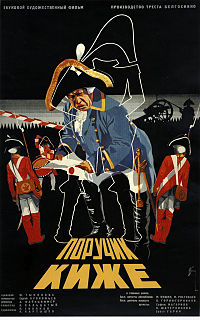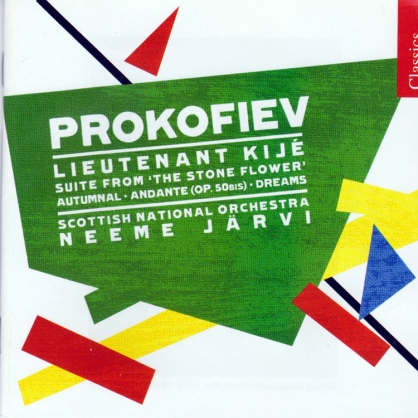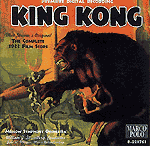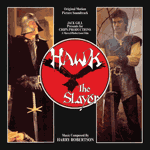The Bride of Frankenstein (1935)/Waxman
January 27, 2013
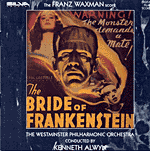 SILVA SSD 1028 Kenneth Alwyn conducts the Westminster Philharmonic
SILVA SSD 1028 Kenneth Alwyn conducts the Westminster Philharmonic
Like other Hollywood films THE BRIDE OF FRANKENSTEIN had a story in the making of the picture as interesting as the film itself. Carl Laemmle Jr. was in the process of forming his own production company and wasn’t interested in making it. James Whale, director of FRANKENSTEIN, had more interest in a H.G. Wells story A TRIP TO MARS but one could assume that $15,000, a hefty amount of money in the thirties changed his mind. The studio couldn’t decide whether to call it return or bride, there were delays as to the premiere, it was over budget and the list went on and on. When it finally premiered after a battle as to what theatre in New York was going to show the film it was a bit of a disappointment not approaching the success of the original FRANKENSTEIN (1931) which generated twelve million dollars in sales. Apparently they felt that the sequel would outdo the original at the box office. Dream on.
Franz Waxman (1906-1967) was given the assignment to score the film by Whale because he liked what he did with the Fritz Lang picture LILIOM and he didn’t disappoint him, turning in a superb soundtrack. Working with a rather small orchestra, between 22 and 40 musicians Waxman like Steiner approached this as a Wagner opera and filled it with several leitmotifs for the characters in the picture. While it was not mentioned for an Oscar nomination it is this reviewer’s opinion that it was the best score for 1935. “The Bride of Frankenstein-Main Title” which I’ve included as an audio track main title bride of frankenstein begins with a harp glissando, tremolo from the strings and is followed by the five note monster motif from the brass, one you’ll hear many times in the score. There is a brief reference to the Dr. Pretorius theme, and the Bride theme, a three note motif. The track ends with a reference to the Bride theme, a majestic dreamlike melody. “Prologue-Menuetto and Storm” takes you back to romantic era of classical music with its minuet intertwined with a few dramatic bars. This listener can hear both Mozart and Beethoven references. “Monster Entrance” repeats the monster motif as well as a comic motif for Minnie. It is played by the flute with the clarinet and bassoon answering the theme. “Processional March” is played Grave tempo with strings and sounds like a funeral march. “The Creation,” music that was played when the Bride was brought to life incorporates all of the themes that Waxman had created. The longest of the cues, it plays out like a short tone poem (10 minutes in length) and is still as fresh sounding nearly eighty years later. The CD concludes with a short suite from THE INVISIBLE RAY (1936), what is available from the Karloff/Lugosi thriller.
Given the limited budget that Waxman had to work with he created a soundtrack that has become a template for others to follow. Kenneth Alwyn and the Westminster Philharmonic give a good performance and is the CD of choice offering forty minutes of material. The Sound Track Factory (SFCD33554) offer an OST release which unfortunately includes sound effects and dialogue from the film. As part of his Waxman release Charles Gerhardt offers a suite of the material in his usual excellent performance. This is an early score that certainly belongs in your collection. Highly recommended.
Track listing
Total Duration: 00:46:09 |
The Untouchables/Morricone
January 24, 2013
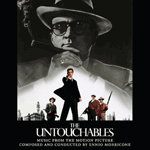 LLLCD1236 LIMITED EDITION 3500 UNITS
LLLCD1236 LIMITED EDITION 3500 UNITS
Suggested in part by a story from Eliot Ness, published after his death, the Brian De Palma film starred Kevin Costner, Sean Connery, and Robert De Niro. It told the story of the famous group of agents who enforced the 18th amendment (prohibition) for the government. As many of you know this turned out to be a very dark time in US history as many citizens ignored the law and 14 years later the amendment was repealed. If you’re interested in exploring this history further I would encourage you to view the excellent series by noted historian Ken Burns. The three disc five plus hour special for PBS is available through Amazon among many sellers and will be a real eye opener as to what really happened.
La-La Land has re-released the Oscar nominated score as a two CD limited edition set giving you the original motion picture score, the A&M album, and bonus tracks making the total running time 112 minutes.
To set the record straight the themes and variations that you’ll hear sound completely different from the Nelson Riddle score for the 1959 television series starring Robert Stack. Nelson’s theme is big band all the way with active trombones and trumpets. His underscore, while appropriate for the scenes is somewhat non descript. Morricone is another story.
The huge moneymaker is filled with themes which Morricone then uses variations of to make for a very listenable score. This is a score that you’ll easily identify the themes on the very first listen. It is the clever variations used by Morricone that repeated listens will reveal and make for a very listenable score. For example, the end title which opens CD2 is repeated on track six “Victorious” which begins with a tuba solo and dark ominous chords before Morricone segues into the end title music again is a heroic good over evil theme that will stick in your memory. “Al Capone” has an Italian sound which eventually turns into a raucous sounding melody with wa-wa from the trombones and a pounding beat from the drums. “Death Theme” is a lullaby tempo with sax that has his western sound we are so familiar with. It is played as Ness mourns over the death of Malone (Connery). “The Man with the Matches” again comes right out of a spaghetti western with harmonica playing against quiet underscore. “Machine Gun Lullaby” quietly begins with a music box theme slowly giving way to terrifying underscore; the kind of music you just know is a prelude to something bad about to happen. “Mood Indigo,” one of my favorite Ellington pieces is appropriate as a period piece. It is played slow and easy with an outstanding clarinet solo. As violent and graphic the film is “Ness and his Family” depicts the home life that Eliot has. A flute followed by solo violin with very quiet harmony in the background gives one a feeling of comfort.
Jeff Bond, an excellent liner note writer, gives one plenty of information to absorb about everything you want to know about the director, film, A&M release, and the original motion picture release. Sound quality and engineering are quite typical of the sound you would hear from an 80’s film. Unlike some extended releases which can become boring after listening to the fifth variation of the main theme, there is a lot of thematic material covering many styles of music to keep your ear interested for over one hundred minutes. A nice release.
Total Duration: 01:53:12 |
||||||||||||||||||||||||||||||||||||||||||||||||||||||||||||||||||||||||||||||||||||||||||||||||
Alexander String Quartet/Gershwin and Kern
January 21, 2013
Lately it seems like Carl Davis keeps popping up musically for me. I recently finished a review of his score (reconstructed from the original Chaplin) for “City Lights,” received a new release of a James Bond CD, and also found out by reading the liner notes that he arranged Gershwin’s “Porgy and Bess” for String Quartet and Clarinet (based on the Heifetz arrangements). When the new public relations company Rosebrook Classical, recently started by David Weuste, contacted me about possibly doing a review I immediately agreed to a listen knowing my fondness for Gershwin and Kern. It arrived promptly in the mail from the cellist of the Alexander String Quartet Sandy Wilson with a handwritten note, a rarity these days, with a comment that some reviewers said a classical quartet should stick to classical music. This comment intrigued me even more, prompting me to play the recording.
The first part of the CD includes the four major songs from “Porgy and Bess” featuring the clarinet of Joan Enric Lluna. It is written as a showcase for the talents of the virtuoso and he doesn’t disappoint. The quartet doesn’t take a back seat but nicely melds itself as an integral part of the suite. It is nicely recorded but I did have to adjust my equalizer from my norm to avoid the shrillness that a clarinet can cause in its upper register.
The second section is six Jerome Kern songs performed by the string quartet in a traditional classical style. I like the material having several artists performing the songs in my collection ranging in style from the jazz pianist Bill Evans,to the romantic Mantovani, to Sinatra. The arrangements offer an extended prelude before the melody is performed. Each member of the quartet takes a turn at offering the melody with unique harmony then coming from the other three members.
The third and final selection is the seldom performed “Lullaby for String Quartet” by Gershwin. Never performed during his lifetime the seven minute work definitely has a Hispanic flavor to it without the usual marimba and percussion. Repeated listens will bring out the complexities and nuances to this neglected work. I especially enjoyed the harmonies and the pizzicato section. While not the typical lullaby one might expect it is well worth having in your collection.
I for one am glad that the quartet decided to explore this material and it will be a CD that I’ll return to on a regular basis. I highly recommend you purchase this CD. You can order it directly from their company at www.FoghornClassics.com or your regular supplier.
While I usually include an audio clip I chose not to on this release as the lower audio quality would detract from the fine sound and playing of the Alexander String Quartet.
Foghorn Classics CD2008
Track Listing
1… Summertime (3:14)
2… A Woman Is a Sometime Thing (2:36)
3… Bess, You is My Woman Now (5:35)
4… It Ain’t Necessarily So (2:43)
5… All the Things You Are (4:39)
6… The Way You Look Tonight (4:46)
7… Bill (4:05)
8… The Song Is You (5:01)
9… Smoke Gets in Your Eyes (4:30)
10. Once in a Blue Moon (4:03)
11. Lullaby for String Quartet (7:11)
Total Time is 48:15
Lt. Kije, Op. 60/Prokofiev
January 20, 2013
http://www.youtube.com/watch?v=Nbb539QZ … redirect=1
Like Herrmann did for “The Devil and Daniel Webster” and Copland for the soundtrack “Red Pony” Sergei Prokofiev (1891-1953) created a suite out of themes for his very first film Lt Kije (1934). The five movement work can be heard with saxophone, baritone voice, or bassoon with other orchestral instruments also being substituted. It has been used by Woody Allen, Danny Elfman, U2, Sauter Finegan, the Simpsons, and various movies over the years. The link above will give you access to the film, a satire based on bureaucracy who was created in the Soviet system because of an error. I’ve included an audio clip of moonlight sleighride from Sauter Finegan, a creative adaptation. moonlight sleighride
The recordings available for this suite could easily number 100 as the major orchestras of the world all seem to have this work in their repertoire of material. The recording that I listened to for this review was Neeme Jarvi conducting the Scottish National Orchestra on Chandos #10481X, part of a five CD collection of orchestral works of Prokofiev. It is a high quality digital recording that nicely duplicates the piccolo, trumpet and percussion with crisp treble without shrill and excellent mellow brass. Its duration is approximately twenty one minutes and comes with my recommendation although as I stated above there are many fine recordings available.
BIRTH OF KIJE begins in the far distance with a trumpet offering an opening fanfare/theme that is somewhat yearning. This is a theme that will be repeated throughout the work. This is followed by a snare drum with a piccolo offering a second melody with harmony from the brass. The theme is light, bright, and lively and eventually disappears as the brass take over in the forte mode with distinct percussion from the side drum. As the orchestra subsides we hear a saxophone and the return of the piccolo playing the same theme as earlier. It ends as it began with the distant sound of a solo trumpet.
ROMANCE, the second movement begins almost dirge like featuring a solo violin and saxophone. It seques into a wonderful romantic arrangement with the flute repeating its melody from the first movement and the work quietly ends with a solo violin.
KIJE’S WEDDING, begins with a loud fanfare with a trumpet solo leading the way with the saxophone repeating a theme from the previous movement.
TROIKA is a very lively theme featuring the brass section with harmony from the pizzicato strings. This is a movement that has been used over the years as music that goes along with a snow scene.
KIJE’S BURIAL, the final movement is a summary of the themes from the first four movements. Instead of a somber funeral like tempo that one would think of with a burial it is on the happy and joyous side. It features excellent counterpoint and overall orchestration. The work ends with the distant trumpet and snare drum.
One could ponder the thought of what would have happened if Prokofiev had remained in the United States instead of returning to the Soviet Union and had been discovered by Hollywood. All I could say is move over Steiner, Korngold, Waxman, Newman, and Tiomkin. What wonderful music he could have made for Hollywood.
King Kong/Steiner
January 15, 2013
So much has been written about the making of KING KONG that it wouldn’t surprise me to see a film someday about the making of the picture and how it all came together. RKO had gone into receivership, Selznick had stepped down to go to MGM being replaced by Merian C. Cooper, an adventurous soul who made this a special project (Carl Denham in the film mirrored his lifestyle). To further complicate matters the film went over budget by $300,000 (nearly double) making the cost $672,000. Once completed MGM (Selznick) offered to buy the film for $400,000 over the cost of making the film which was wisely rejected by Cooper. In the height of the depression it became wildly popular grossing nearly two million dollars. The Edgar Wallace story takes its place in Hollywood history as billed “The Eighth Wonder of the World.” The film was remade in 1976 by Dino De Laurentiis, a real dud of a remake, and by Peter Jackson in 2005 a much better effort with state of the art special effects but miscasting in my opinion. Both films did have very nice soundtracks from Barry and Howard. Richard B. Jewell, author of the RKO Story nicely summed up the score by saying “one must never forget Max Steiner’s musical score-it remains one of the most dynamic compositions in the history of film music.” This was a groundbreaking score that eliminated the sappy opening title and end theme with little or no music during the film!
“Main Title” is included as an audio clip king kong main title preludes with the three note Kong motif, quite ominous in nature followed by the aboriginal dance (repeated in cue four and eight), the theme I associate most with King Kong. It rises in intensity from the brass, strings, and a native style pounding of the percussion. The “Main Title” also includes the “Kong” theme, a few bars of Ann’s “Stolen Love” and a reference to the “Jungle March.” Creepy and eerie are the best words to describe “A Boat in the Fog” with the andante theme with excellent counterpoint from the harp. This is the underscore created by Steiner as the boat is approaching Skull Island. “Sea at Night” is a romantic arrangement of “Stolen Love” which almost seems out of place and better suited to something we might hear in a soap opera film. Still is yet another wonderful theme from Steiner. The theme is repeated in other tracks and is an important part of the score. When you hear the version in “Sacrificial Dance” you’ll understand why. “Entrance of Kong-The Sailors-Stegosaurus” has some of the better underscore written with the woodwinds offering the music as the crew trudge through the forest attempting to rescue Ann, the fight music with the dinosaur, all with the Kong motif making its presence felt. “Finale,” which is the death of Kong, describes the sadness as Steiner mixes in the “Stolen Love” theme ending the film with heroic chords of hope.
Called by many to be the ‘father of film music’ Max Steiner has created a template that has been studied and analyzed by many. It is my opinion that could be the greatest score of all time. It is certainly in my top five favorites of all time. If you like the score seek out the original material on Rhino R2 75597, Southern Cross SCCD901 which features Fred Steiner, or United Artists LA-373-G which has Leroy Holmes conducting. You also can’t go wrong getting the fine John Barry and James Newton Howard scores to the remakes. There is even a rejected score from Howard Shore making it a long listening evening if you want to listen to them all.
Marco Polo 8.223763 or Naxos 8.557700
William Stromberg conducts the Moscow Symphony Orchestra
Track listing
Total Duration: 01:12:05 |
City Lights/Chaplin
January 8, 2013
Did you know that Jean Harlow appeared as an extra in the restaurant scene in CITY LIGHTS? Did you know that Alfred Newman conducted the premiere? When you read good liner notes there are little bits of trivia that you’ll pick up. David Robinson did a fine job at providing pre-film through the process when Carl Davis decided to re-record the original Chaplin material and after reading I really felt like I had learned something.
Having spent a great deal of time reviewing, evaluating, and listening to THE ARTIST (2011) I got quite excited when the distributor Naxos sent me the Carl Davis re-issue (CDC 015) of his original re-recording Circumstances were very similar for both films, a silent picture in the early era of sound. Chaplin made a statement to the press and anyone else who would listen that “sound films were a fad that would pass in a year or two.” Whether or not he believed what he said is another story.
Composed by Charlie Chaplin for a 35 piece orchestra it was arranged to be the counterpoint of what you saw on the screen. There was to be no competition for the tramp. Composing took place by Chaplin humming the melodies to his chief orchestrator Arthur Johnston who would then orchestrate in the way that Chaplin dictated. When Davis took on this project it seemed to be relatively easy as material was all written down. There was a conductor’s score to make the task even easier. The problem came when the written score was compared with the original recording (there were lost notations) making it extremely difficult to synchronize the re-recording to the film itself.
The music as a standalone listen is a very pleasant one offering different melodies on most of the tracks. My favorite track is the final cue “Reunited” which unfolds into the operatic track “La Violetera” without singing. It is filled with love in the air music with counterpoint from the piano. It is delicate and elegant like the tramp. Other tracks of interest include the “Overture/Unveiling the Statue” which features a mocking clarinet, raucous arranging, trumpet fanfares, and racing strings. “The Nightclub Dance Suite” features some nice sax work, an urgent waltz, and some sweet band period music.
I found that this recording benefitted from speakers instead of headphones which I usually use in the evaluation process. As an example the trumpet fanfares were different from each channel and speakers revealed the distinct differences. The sound is exceptionally clear with no shrill from the upper registers. The sax, bassoon, and clarinet sounded like I was in the studio while they were recording.
If you’re looking to expand your soundtrack material from the early days of scores this would be a welcome addition to the collection. I had the opportunity to briefly speak to Carl Davis about this recording and I don’t know who was more excited about this him or me! I guess we’ll call it a tossup.
Track listing |
|
1. |
Overture/Unveiling the Statue (04:14) |
|
2. |
The Flower Girl (La Violetera) (03:03) |
|
3. |
Evening/Meeting the Millionaire (05:42) |
|
4. |
At the Millionaire’s Home (03:55) |
|
5. |
The Nightclub – Dance Suite (05:08) |
|
6. |
The Limousine (02:24) |
|
7. |
The Sober Dawn (03:02) |
|
8. |
The Party and the Morning After (02:37) |
|
9. |
Eviction/The Road Sweeper/At the Girl’s Home (07:43) |
|
10. |
The Boxing Match (04:49) |
|
11. |
The Burglars (03:12) |
|
12. |
Reunited (07:33) |
Total Duration: 00:53:22
Hawk The Slayer/Robertson
January 6, 2013
There are some movies that are released and disappear before you can blink. Such was the case with HAWK THE SLAYER which was released for the very first time on CD (previously released on LP) by BSX. This reviewer had never heard of it and when he did I thought here is another sword/fantasy to write about. I was surprised! The well researched liner notes by Randall Larson, chief writer for BSX, explained this and more about the film. If you look at the credits closely you’ll see that the composer of the soundtrack Harry Robertson, wrote scores for Hammer in the seventies, was also the producer of the film
The film fared rather poorly at the box office in spite of Jack Palance starring in the role of the Voltan who would stop at nothing to obtain the magic sword. Made in England at Pinewood Studios the film also starred John Terry, Annette Crosbie, and Roy Kinnear.
“Hawk the Slayer,” which is also offered as a bonus track performed by Dominik Hauser, an up and coming composer who is becoming a favorite of mine, is a typical sounding eighties track and one might think it would be out of place but it really isn’t at all. It is a combination of synthesizer and orchestra with modern sounding references to Ennio Morricone and his distinct sound for the Eastwood Italian films. Add to this a modern sounding guitar and a steady nonstop percussion and you have it. The theme is offered on other tracks in different styles so if you like it, which I do, you’ll hear it often. The Hauser version opens with a positive brass fanfare of the theme with harmony from the flute. It is a track that could be played in a nightclub/disco setting and fit right in. I’ve included the Hauser track as an audio clip. hawk hauser version Keep in mind that these clips are fairly low quality so don’t think what you hear here is what the CD sounds like. “The Table of Five” introduces another melody with that modern sounding Western flavor again. “Elaine” is the romantic track. It is a lush melodic interlude that depicts the heroine. Part way through we hear the Hawk melody as the two themes are interwoven with harmony from a wordless female choir. A nice track! “Drogo-Son of Voltan” really takes you back to that spaghetti western sound using the Hawk theme.
The re-master is taken from a tape source so while it is clean without glitches it doesn’t have the crisp sound of a digital recording. I certainly wouldn’t classify it as an archival recording. It is a limited edition of 1000 units so it is to your advantage to act sooner than later. As I said earlier there are excellent liner notes from Randall Larson. If an old listener with golden ears gets something out of the release think what the younger generation will think. Recommended
BSX CD 8920
Track Listing:
1… Hawk the Slayer (4:07)
2… Voltan-The Dark One (2:29)
3… The Table of Five (3:25)
4… Eliane (5:30)
5… Battle of Voltan’s Camp (3:24)
6… Crow-The Elf (2:34)
7… Drogo-Son of Voltan (2:36)
8… The Mindsword (2:04)
9… The Final Combat (Death of Voltan) (3:06)
10 Death of a Hero (Death of Baldin) (1:21)
11 The Story Continues (6:16)
12 Theme from Hawk the Slayer (Hauser) (3:05)
Total Time is 40:21
The Music of Forgotten Horrors/Chudnow
January 4, 2013
 SCORING CUES FROM POVERY ROW #CRMO7803
SCORING CUES FROM POVERY ROW #CRMO7803
Do the names Abe Meyer (1901-1969) and David Chudnow (1902-2002) mean anything to you? When was the last time you saw a PRC picture? Chudnow was the musical director for PRC writing many scores as well as using Abe Meyer Synchronizing Service, a company that provided pre-recorded material to fit whatever kind of music your film needed. Meyer tried to break in on his own as a musical director for one of the smaller studios without success, thus the starting up of his company. This is what this CD from Michael Price is all about. Price has written volumes about many of these films and is now offering some of the cues on CD for the very first time. If you’re a fan of these ‘B’ films, serials, and early television you’ll recognize some of them on your very first listen. As Price says the cues are prefilm and thus are “unindexed to any specific film.
Highlights of the CD include “Men of Steel” which might lead one into believing that it could be a superhero cue? Wrong. It sounds like it is the background for a street scene that takes place in the Orient. The strings begin with a pentatonic style as the brass offer a somewhat complex melody. “Eerie Night” is a cue where I do recognize the theme from episodes of the Lone Ranger radio program. The cue is divided into a prelude and theme consisting of mostly strings. I’ve included an audio clip of this track. eerie night “Parade of the Tumblers” is not really a horror cue but more in the category of cartoon style music. It offers a prelude, main theme, and then a return to the prelude again. The middle section offers a melody from the brass. “Crime Doesn’t Pay” certainly fits the name as it is certainly in the classification of being melodramatic. “Dark of the Moon” is a brief cue in the category of a tension builder that could fit a variety of melodramatic situations. “Beguine” is a number that could fit any number of dance, night club, or bar situations. It is played sweet band style.
While all of the cues are listenable there is nothing memorable enough for you to remember with the possible exception of “Eerie Night.” The sound quality is definitely put into the category of archival, what you might expect from a recording of these cues, but then you probably knew that going in. There is surface noise, pops, and considerable warbling on some of the tracks. Price says there will be further volumes in the future as he is in the process of editing cues at the time of this writing. I can only recommend this CD to the ardent lover of the ‘B’ films. You can’t consider this as a standard compilation purchase.
Track Listing:
1… Crime Does Not Pay (2:44)
2… Parade of the Tumblers (2:50)
3… P.O. Prune (2:21)
4… Pillars of Hercules (3:00)
5… Beguine (2:26)
6… Dismal Swamp (2:42)
7… Confusion (1:15)
8… Rebellion and General Havoc (1:30)
9… Disorder (1:18)
10. Tell Tale Heart (2:23)
11. Eerie Night (3:00) (included as an audio clip)
12. The Ghost Walks (1:33)
13. Dramatique (1:00)
14. Stealthy Footsteps (1:44)
15. Tumult and Commotion (1:18)
16. Men of Steel (1:29)
17. Condemned (2:54)
18. Dark of the Moon (:42)
19. Repose (:54)
20. Vigil (:42)
21. Hypertension (:43)
22. Bridge #1 (:18)
23. Bridge #2 (:30)
24. Bridge #3 (:12)
25. Bridge #4 (:25)
26. Bridge #5 (:15)
Total Time is 41:31

